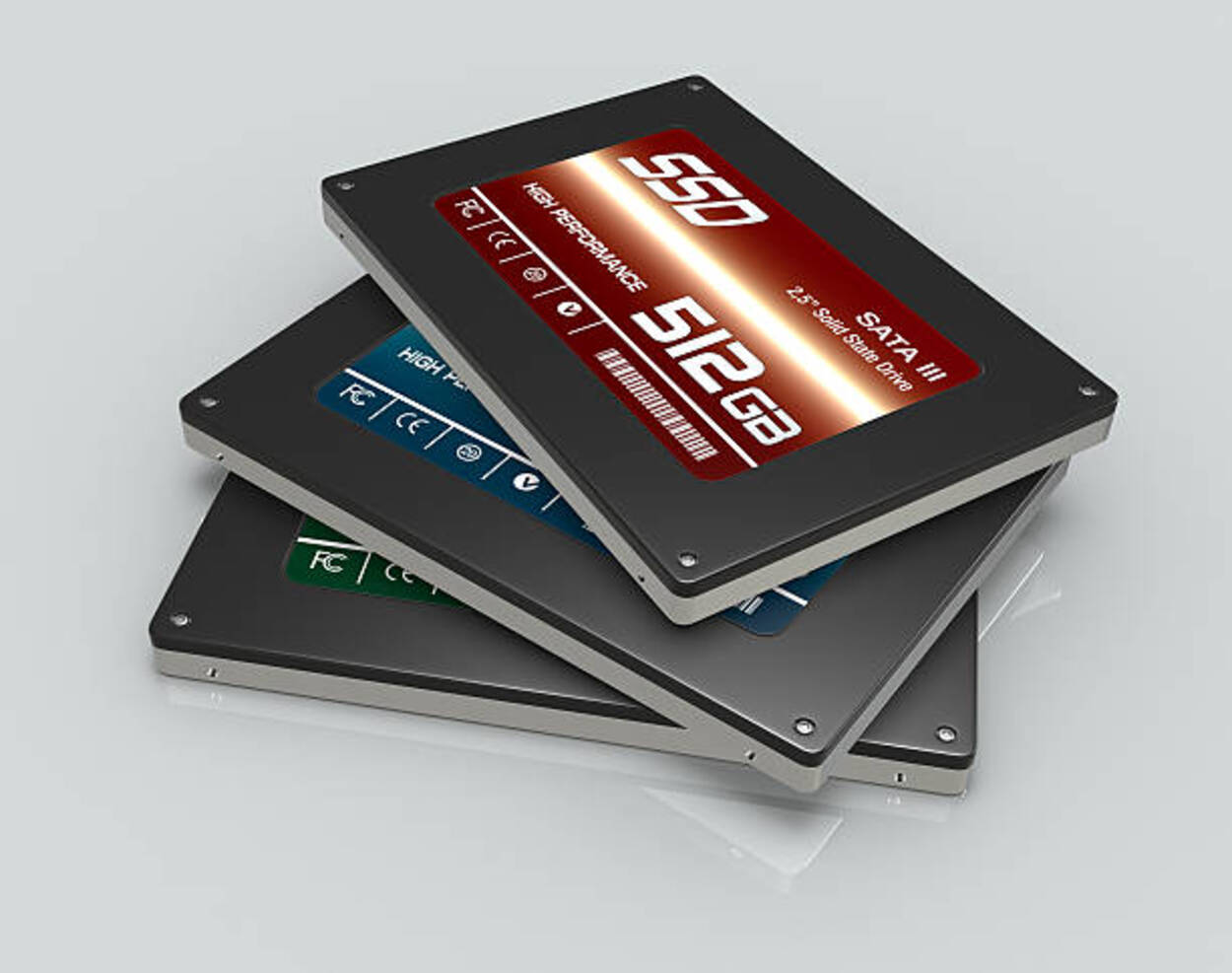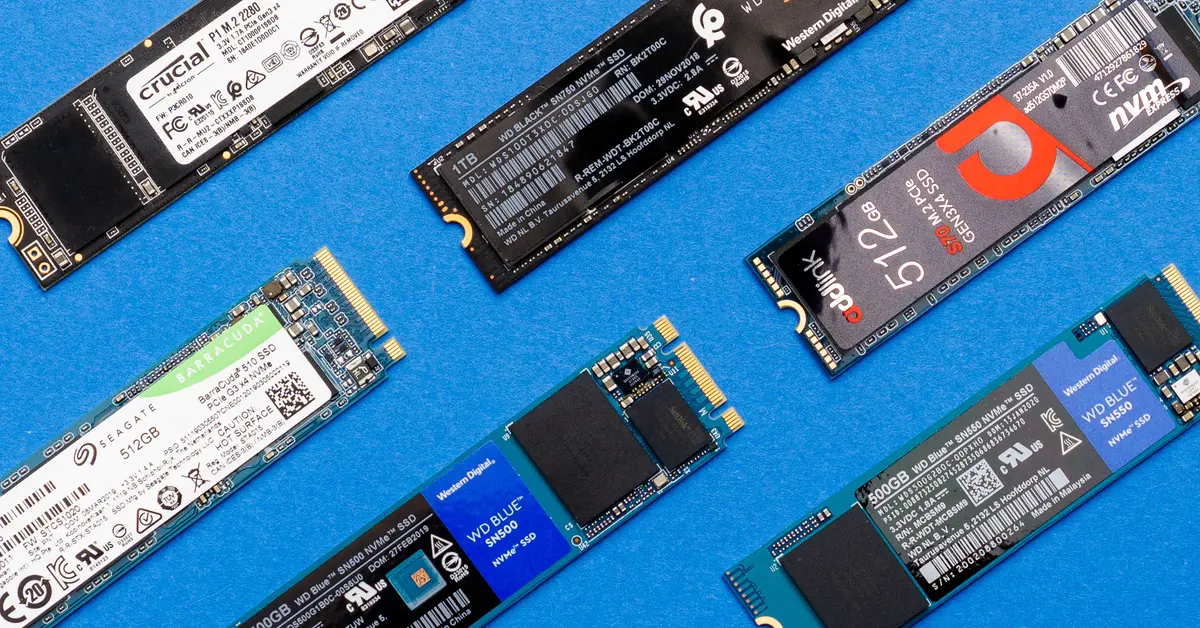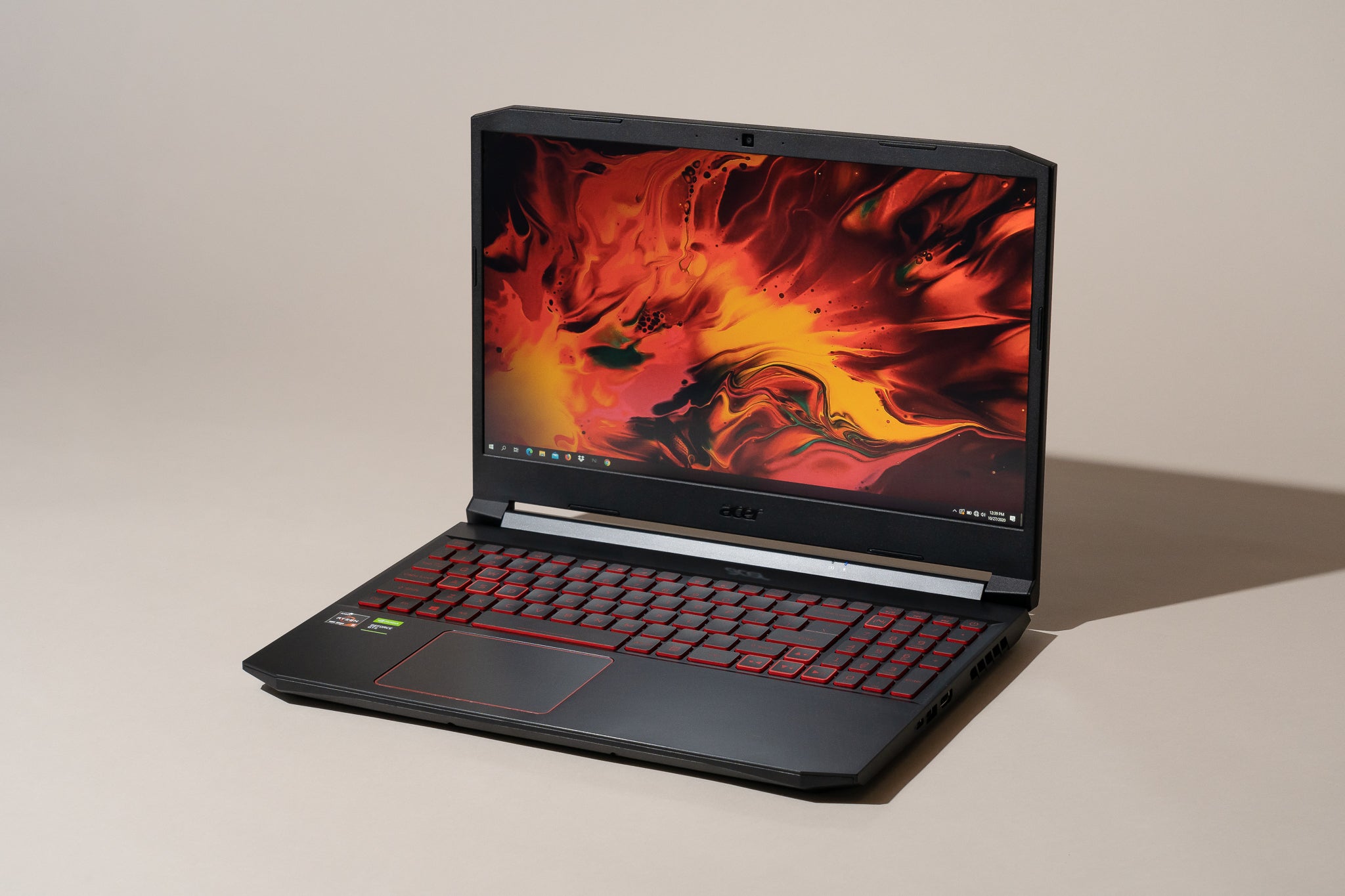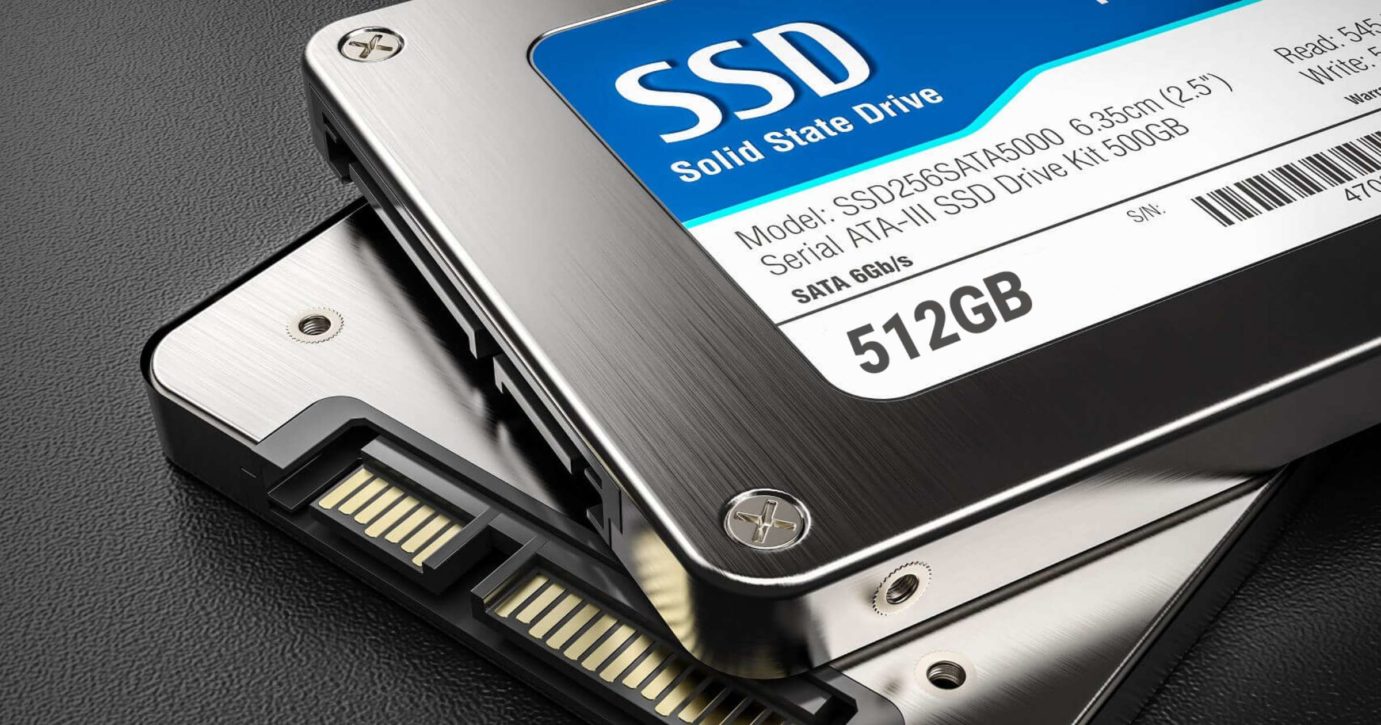Introduction
Welcome to our comprehensive guide on the difference between a 256GB SSD and a 512GB SSD. Solid State Drives (SSDs) have become increasingly popular in recent years due to their superior performance and storage capabilities compared to traditional hard drives. As storage technology continues to evolve, it’s essential for users to understand the key differences between various SSD options. In this article, we will explore the variations between a 256GB SSD and a 512GB SSD, helping you make an informed decision based on your specific needs and requirements.
An SSD, unlike a traditional hard drive, uses flash memory to store data, resulting in faster read and write speeds, improved durability, and reduced power consumption. SSDs have revolutionized the computing industry by significantly enhancing the overall user experience. However, when considering the purchase of an SSD, the storage capacity plays a crucial role in the decision-making process.
In this guide, we will compare the speed, storage capacity, price, performance, and user needs for both the 256GB SSD and the 512GB SSD. By the end, you will have a clear understanding of the distinctions between these two options, allowing you to determine which one best suits your individual requirements.
Speed
When it comes to speed, both the 256GB SSD and the 512GB SSD offer significant improvements over traditional hard drives. However, there are some differences to consider between these two options.
The speed of an SSD is determined by its read and write capabilities, commonly referred to as sequential and random speeds. Sequential read and write speeds represent how quickly the SSD can read and write large files in consecutive order, while random read and write speeds measure the SSD’s performance with smaller files and random access operations.
In general, larger capacity SSDs tend to have slightly faster speeds compared to their smaller counterparts. This is primarily due to the way data is distributed across the storage chips within the drive. A 512GB SSD may have more storage chips compared to a 256GB SSD, allowing for parallel processing and faster data transfer rates.
However, it’s important to note that the speed difference between a 256GB SSD and a 512GB SSD may not be noticeable in real-world usage scenarios for most users. Both options offer blazing fast read and write speeds that can significantly reduce boot times, application load times, and file transfer speeds compared to traditional hard drives.
Ultimately, the speed advantage between a 256GB SSD and a 512GB SSD may be more relevant for power users, such as gamers or video editors, who work with large files and require the fastest performance possible. For the average user, both options provide a substantial boost in speed and a pleasant overall computing experience.
Storage Capacity
One of the most significant differences between a 256GB SSD and a 512GB SSD is the storage capacity they offer. The capacity of an SSD determines how much data you can store on the drive.
A 256GB SSD provides a decent amount of storage for most users. It can accommodate an operating system, a range of software applications, and a significant number of files and documents. This capacity is sufficient for everyday tasks like web browsing, document editing, and light media consumption. However, if you regularly work with large files, such as video projects or high-resolution images, you may find the storage space restrictive over time.
On the other hand, a 512GB SSD offers double the storage capacity compared to a 256GB SSD. This additional space can be beneficial if you have a large digital media library, frequently work with resource-intensive software, or require ample storage for projects and files. With a 512GB SSD, you can comfortably store a broader range of programs, games, multimedia files, and documents without worrying about running out of space.
It’s important to consider your specific storage needs when deciding between a 256GB SSD and a 512GB SSD. If you primarily use your computer for basic tasks and don’t require extensive storage space, a 256GB SSD should suffice. However, if you engage in activities that demand more storage, such as media editing or gaming, a 512GB SSD will provide the flexibility and capacity to accommodate your requirements.
Remember that both SSDs can also be supplemented with external storage options, such as external hard drives or cloud storage services, to expand your storage capabilities further.
Price
Price is a critical consideration for many users when choosing between a 256GB SSD and a 512GB SSD. As storage capacity increases, so too does the cost of the SSD.
Generally, a 256GB SSD is more affordable compared to a 512GB SSD. The price difference can vary depending on the brand, model, and other factors, but in most cases, a 512GB SSD will be more expensive. This is because larger capacity SSDs require more expensive NAND flash memory chips to achieve the higher storage capacity.
It’s worth noting that the price difference per gigabyte between a 256GB SSD and a 512GB SSD tends to decrease as storage technology advances. However, at any given time, a 512GB SSD will still command a premium over a 256GB SSD.
When considering budget constraints, it’s important to assess your storage needs realistically. If you only require a moderate amount of storage for everyday tasks and don’t mind managing your files and applications carefully, a 256GB SSD can offer a cost-effective solution.
Alternatively, if you need ample storage capacity and have the budget to accommodate it, a 512GB SSD provides a larger storage space without the need for external storage options.
Ultimately, the decision between a 256GB SSD and a 512GB SSD boils down to your budget and the level of storage flexibility you require. Assessing your needs and weighing them against the price difference can help you make an informed decision that suits both your requirements and your budget.
Performance
When it comes to performance, both a 256GB SSD and a 512GB SSD can deliver impressive speeds and efficiency compared to traditional hard drives. However, there are some performance factors to consider when deciding between these two options.
Firstly, a larger capacity SSD like the 512GB model typically offers slightly better performance compared to a smaller 256GB SSD. This is due to the increased number of storage chips and parallel processing capabilities, allowing for faster data transfers and overall system responsiveness.
However, it’s important to note that the performance gap between a 512GB SSD and a 256GB SSD may not be noticeable in regular day-to-day usage for most users. Modern SSDs, regardless of capacity, offer fast boot times, quick application launches, and snappy multitasking capabilities, improving overall system performance.
In terms of durability and reliability, both a 256GB SSD and a 512GB SSD are superior to traditional hard drives. SSDs have no moving parts, making them more resistant to physical damage caused by drops or impacts. They also have a lower failure rate and longer lifespan compared to hard drives, making them a reliable choice for storing important data.
Another performance consideration is the endurance or the number of program and erase (P/E) cycles an SSD can handle before the storage cells degrade. Generally, larger capacity SSDs like the 512GB model tend to have higher endurance ratings compared to smaller capacity SSDs. However, for most consumers, the endurance difference between a 256GB SSD and a 512GB SSD is not a significant factor to consider, as the lifespan of modern SSDs is already quite long.
Ultimately, both the 256GB and 512GB SSDs provide excellent performance and reliability. The decision between the two should be based on factors such as your specific usage requirements, budget, and the amount of storage you need.
User Needs
When considering whether to opt for a 256GB SSD or a 512GB SSD, it’s essential to assess your own needs and requirements as a user. Different users have different storage demands and usage patterns that can influence their choice between these two options.
If you primarily use your computer for basic tasks like web browsing, word processing, and media consumption, a 256GB SSD may be sufficient. This capacity can provide enough space for your operating system, essential software applications, and a reasonable amount of personal files and documents. If you are mindful of storage management and regularly delete unnecessary files or offload them to external storage, a 256GB SSD can serve you well without feeling restrictive.
On the other hand, if you engage in activities that require more storage, such as graphic design, video editing, or gaming, a 512GB SSD may be a better fit. These activities often involve working with large files, resource-intensive software, and media libraries. Having the extra space allows for smoother workflow, faster loading times, and the flexibility to store a broader range of programs and files.
Additionally, consider your long-term needs and future growth. If you anticipate an increase in your storage requirements or plan to install more software or games over time, investing in a larger capacity SSD like the 512GB model can provide peace of mind, eliminating the need for frequent storage management or reliance on external storage solutions.
Another aspect to consider is your budget. While a 256GB SSD is generally more affordable than a 512GB SSD, it’s crucial to strike a balance between your storage needs and your financial constraints. If your budget allows for it, opting for a larger capacity SSD can future-proof your system and provide more flexibility down the line.
Ultimately, understanding your specific usage patterns and storage requirements is crucial in determining the most suitable SSD capacity for your needs. It’s always recommended to assess your current storage usage, consider your future needs, and strike a balance between storage capacity and affordability to make an informed decision.
Conclusion
When it comes to choosing between a 256GB SSD and a 512GB SSD, there are several factors to consider, including speed, storage capacity, price, performance, and user needs. Both options offer significant advantages over traditional hard drives, providing faster speeds, improved durability, and enhanced overall system performance.
In terms of speed, while a larger capacity SSD like the 512GB model may have a slight edge in performance, the difference may not be noticeable in everyday usage for most users. Both options deliver impressive read and write speeds that significantly reduce boot times and application load times.
Storage capacity is a significant consideration, with the 512GB SSD offering double the storage space compared to the 256GB model. If you work with large files, have a media-intensive workflow, or require ample space for projects and programs, a 512GB SSD provides the flexibility and capacity to meet your storage needs. However, if you primarily use your computer for basic tasks and don’t require extensive storage, a 256GB SSD can provide a cost-effective solution.
Price is another factor to consider, as a 512GB SSD tends to be more expensive compared to a 256GB SSD. It’s essential to assess your budget and storage requirements to strike a balance between capacity and affordability.
When it comes to performance, both SSDs offer excellent speed, durability, and reliability. Larger capacity SSDs may have a slight performance advantage, but it may not be significant for most users’ day-to-day usage. Understanding your specific needs and usage patterns will help determine which SSD capacity is the best fit for you.
Ultimately, the decision between a 256GB SSD and a 512GB SSD depends on your individual requirements, budget, and storage needs. Assessing your usage patterns, considering future growth, and striking a balance between capacity and affordability will help you make an informed choice that provides the optimal storage solution for your computing needs.

























